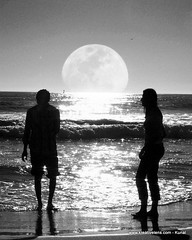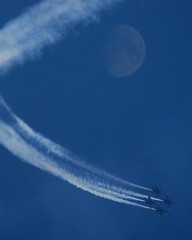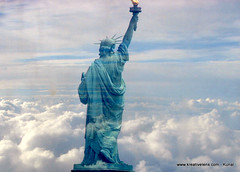
While your camera is adept at recording the real world, you can also use it to create fantasy images that will baffle and delight your viewers. Among the most notable of these special effects is multiple exposure – two or more images superimposed or juxtaposed.
You might be wondering how there can be so many shots of American cities including a full moon when most buildings are too tall for a natural moonrise over the city skyline. The answer is simple: the magic of double exposure. I prefer this treatment because I can then decide exactly where I want the moon to be in my compositions.
In double and multiple exposures, one or more captures are combined to create a single well-exposed image. Thus if you want to create a double exposure, you must shoot two images, both underexposed by one stop, and combine them to get correct double exposure.
In some multiple exposures, much of the superimposed images will overlap. Try to make the images complement one another and distribute their tones to avoid too much exposure in one area and not enough in another.
Table below shows the exposure based on the number of images in montage.
Number of Images in montage | Number of f-stops to decrease exposure. |
2 | 1 |
3 | 1 ½ |
4 | 2 |
5 | 2 ¼ |
6 | 2 ½ |
7 | 2 ¾ |
8 | 3 |
There is an important aspect to note about double and multiple exposures. Once an area is fully exposed to white, it cannot be exposed with any other color. This is one reason why you don’t see multiple exposures shot in snow.
Despite the need to be careful and precise, you will find that creating a double exposure is easy. You shoot the two compositions at one stop under the indicated reading.





No comments:
Post a Comment